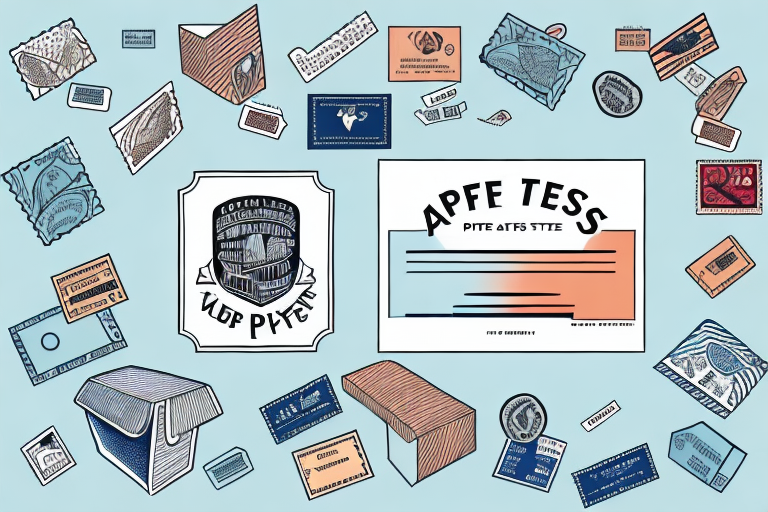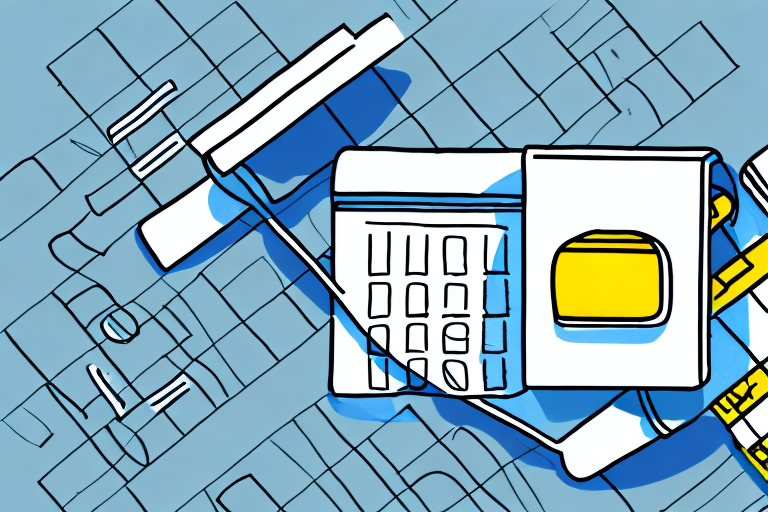Understanding UPS Flat Rate Boxes Shipping Rates
If you are looking for a reliable and cost-effective way to ship your packages, UPS Flat Rate Boxes can be a great option to consider. In this article, we'll take an in-depth look at what UPS Flat Rate Boxes are, their advantages, how to choose the right size box for your shipment, the items eligible for flat rate shipping, the costs associated with UPS Flat Rate Boxes, how to calculate shipping rates, tips for maximizing savings, packaging and labeling your shipment, delivery times and tracking options, frequently asked questions, hazardous material guidelines, and a comparison with other shipping carriers. By the end of this article, you will have a comprehensive understanding of how UPS Flat Rate Boxes shipping rates work and how to use them effectively.
What are UPS Flat Rate Boxes?
UPS Flat Rate Boxes are specially designed boxes that come in several sizes and allow you to ship your goods within the United States at a fixed rate regardless of weight, destination, or dimensional volume. These boxes are ideal for small and medium-sized businesses that need to ship items frequently while aiming to save on shipping costs. The flat rate system offers predictability in pricing, making it easier for businesses to budget their shipping expenses. UPS Flat Rate Boxes can be used for shipping both documents and packages weighing up to 70 pounds.
One of the key benefits of using UPS Flat Rate Boxes is that they include free packaging supplies, such as tape and labels, saving businesses both time and money by eliminating the need to purchase their own packaging materials. Additionally, UPS offers a pickup service for these boxes, allowing businesses to avoid the hassle of leaving their premises to drop off shipments at a UPS location.
It is important to note that UPS Flat Rate Boxes have certain restrictions, such as prohibiting the shipment of hazardous materials or live animals. Businesses should also be aware that the flat rate pricing may not always be the most cost-effective option for larger or heavier shipments. However, for smaller and lighter items, UPS Flat Rate Boxes can be a convenient and affordable shipping solution.
Advantages of Using UPS Flat Rate Boxes
The benefits of using UPS Flat Rate Boxes include simplicity, predictability, and cost savings. With flat rate shipping, businesses can anticipate their shipping costs upfront, allowing for accurate budgeting. UPS Flat Rate Boxes offer the convenience of ordering boxes online or picking them up from a local UPS store. Additionally, there are no additional handling fees, and shipping insurance is included for values up to $100. Businesses can also track their shipments using the UPS tracking system, which helps them monitor the arrival time of their packages.
Another advantage of using UPS Flat Rate Boxes is the variety of sizes available, making it easy for businesses to select the right box for their shipment. This ensures that packages are properly secured and protected during transit, reducing the risk of damage or loss. Furthermore, UPS Flat Rate Boxes are made from high-quality materials, ensuring they can withstand the rigors of shipping and handling.
Time-saving is another significant advantage. Since the boxes are pre-labeled with shipping information, businesses can simply pack their items and drop them off at a UPS location or schedule a pickup. This eliminates the need to spend time filling out shipping labels and reduces the risk of errors or delays in the shipping process.
How to Choose the Right Size of UPS Flat Rate Box for Your Shipment
Choosing the correct box size for your shipment is crucial to ensure cost-effectiveness and the safe delivery of your items. Consider factors such as the size and weight of your package, the shipping destination, and the fragility of the item being shipped. UPS Flat Rate Boxes come in different sizes, including Small, Medium, and Large, each with specific dimensions:
- Small Flat Rate Box: 8 11/16" x 5 7/16" x 1 3/4"
- Medium Flat Rate Box: 11 7/16" x 8 5/8" x 6"
- Large Flat Rate Box: 12 1/4" x 12 1/4" x 6"
The Small and Medium boxes are ideal for lightweight items, while the Large box is suitable for larger and heavier items up to the maximum weight of 70 pounds. Exceeding the weight or size limits may result in additional fees.
Additionally, consider the shape of the item being shipped. Irregularly shaped items may not fit properly in standard boxes, which could necessitate custom packaging solutions. For fragile items or those requiring special handling, opt for boxes with extra padding or protection to ensure safe arrival.
Furthermore, consider the shipping method and delivery timeline. If expedited shipping is required, a larger box may be needed to accommodate faster shipping options. For international shipments, a smaller box may be necessary to meet size and weight restrictions imposed by international carriers.
What Items are Eligible for UPS Flat Rate Boxes?
Most non-perishable items are eligible for shipping using UPS Flat Rate Boxes, including books, clothing, electronics, and other small to medium-sized products. However, there are restrictions and guidelines for certain items. For example, hazardous materials and live animals cannot be shipped using UPS Flat Rate Boxes. It is essential to consult the list of prohibited items on UPS's website before shipping to ensure compliance.
UPS Flat Rate Boxes have specific weight and size limits. The maximum weight for a Flat Rate Box is 70 pounds, and the maximum size is 108 inches in combined length and girth. Items exceeding these limits may require alternative shipping options.
Additionally, UPS offers different types of Flat Rate Boxes, such as the Express Box and the Regional Rate Box, each with their own specific guidelines and restrictions. Review all available options to select the best shipping method for your package.
How Much Does it Cost to Ship with UPS Flat Rate Boxes?
The cost of shipping with UPS Flat Rate Boxes varies based on the size of the box and the destination within the United States. As of October 2023, the approximate costs are:
- Small Flat Rate Box: $8.50
- Medium Flat Rate Box: $15.50
- Large Flat Rate Box: $21.90
With flat rate shipping, businesses can get a clear idea of their shipping costs upfront, aiding in budgeting and financial planning. For the most accurate and up-to-date pricing, it is recommended to consult the UPS website or contact UPS directly.
Differences Between UPS Flat Rate Boxes and Other Shipping Options
One major difference between UPS Flat Rate Boxes and other shipping options is the fixed pricing of UPS Flat Rate Boxes, compared to other shipping methods that calculate costs based on weight, size, and destination. Additionally, UPS Flat Rate Boxes include tracking and insurance at no extra cost, enhancing security and peace of mind for businesses.
Other major shipping carriers offer similar services but may not provide flat rate pricing or include tracking and insurance at no additional cost. For instance, carriers like FedEx and USPS have their own flat rate options, but the pricing structures and included services can vary, making UPS Flat Rate Boxes a competitive option for many businesses.
How to Calculate Shipping Rates for UPS Flat Rate Boxes
Calculating shipping rates for UPS Flat Rate Boxes is straightforward. Follow these steps:
- Determine the box size: Select the appropriate UPS Flat Rate Box size (Small, Medium, or Large) based on your shipment's dimensions and weight.
- Enter the destination: Specify the shipping destination within the United States.
- Check weight limits: Ensure your package does not exceed the maximum weight of 70 pounds to avoid additional fees.
You can use the UPS website or the UPS mobile application to calculate the exact shipping rates. These tools provide real-time rates and allow for easy comparison between different shipping options.
Tips for Maximizing Savings When Using UPS Flat Rate Boxes
To optimize your shipping costs and maximize savings when using UPS Flat Rate Boxes, consider the following tips:
- Choose the appropriate box size: Selecting the right box size helps avoid additional fees for oversized packages and ensures efficient use of space.
- Consolidate multiple packages: Combining multiple items into a single Flat Rate Box can reduce overall shipping costs.
- Optimize shipping labels: Use a return address and complete contact information for the recipient to minimize errors and potential delays.
- Compare with other carriers: Evaluate prices for UPS Flat Rate Boxes against similar options offered by other shipping carriers to determine the most cost-effective alternative.
- Take advantage of online discounts: Ordering your UPS Flat Rate Boxes online can often yield discounts and lower shipping rates.
How to Properly Pack and Label Your Shipment with UPS Flat Rate Boxes
Proper packaging and labeling are essential to ensure that your shipments arrive safely and on time. Follow these guidelines when using UPS Flat Rate Boxes:
- Use sturdy boxes: Ensure that the boxes are not damaged and are reinforced as needed. Avoid using boxes that are excessively taped or weakened.
- Seal with adhesive packing tape: Use quality adhesive packing tape to secure the box. Avoid using duct tape or string, as these can compromise the integrity of the shipment.
- Proper label placement: Place the shipping label on the largest surface of the box, ensuring it faces up and does not overlap any edges. Make sure no other labels are attached to the box, which can cause confusion.
- Include contact information: Clearly display both the sender's and recipient's contact information on the shipment label to facilitate smooth delivery.
- Place a duplicate label inside the package: Including a duplicate label within the package serves as a backup in case the original label is lost during transit.
Understanding the Delivery Times and Tracking Options Available with UPS Flat Rate Boxes
UPS Flat Rate Boxes come with a delivery time guarantee, ensuring that your package will arrive within the specified time frame. Typically, most UPS Flat Rate Boxes shipments are delivered within one to three business days from the shipping date. This expedited service is particularly beneficial for businesses requiring timely deliveries.
Additionally, UPS provides several tracking options that businesses can utilize to monitor the progress of their shipments:
- UPS Tracking System: Allows real-time tracking of packages through the UPS website or mobile app.
- Email and Text Notifications: Receive updates about your shipment's status directly to your email or phone.
- Delivery Confirmation: Confirm the delivery of your package with signature verification if required.
These tracking options provide transparency and allow businesses to keep their customers informed about the status of their deliveries, enhancing customer satisfaction and trust.
Frequently Asked Questions About UPS Flat Rate Boxes Shipping Rates
Below are some common questions regarding UPS Flat Rate Boxes and their shipping rates:
- Can I ship internationally using UPS Flat Rate Boxes?
- No, UPS Flat Rate Boxes are available only for domestic shipments within the United States and its territories.
- Can I track my UPS Flat Rate Boxes shipment?
- Yes, UPS offers a tracking system that allows businesses to monitor their shipments in real-time.
- Are there any additional fees associated with UPS Flat Rate Boxes besides the flat rate?
- No, there are no additional handling fees beyond the flat rate price, provided your package adheres to size and weight restrictions.
- What is the maximum weight allowed in UPS Flat Rate Boxes?
- The maximum weight for a UPS Flat Rate Box is 70 pounds.
- Can I include insurance for my shipment?
- Yes, UPS Flat Rate Boxes include shipping insurance for values up to $100. Additional insurance can be purchased if needed.
Understanding the Rules and Regulations for Shipping Hazardous Materials Using UPS Flat Rate Boxes
Shipping hazardous materials (hazmat) requires strict adherence to safety regulations to ensure the well-being of handlers and the public. UPS Flat Rate Boxes have specific rules and regulations for shipping hazmat that must be followed:
- Prohibited Materials: Certain hazardous materials are completely prohibited from being shipped using UPS Flat Rate Boxes. Refer to the UPS hazardous materials restrictions for a comprehensive list.
- Allowed Materials: Only specific types of hazardous materials are permitted. Each material must be properly classified, packaged, and labeled according to UPS and regulatory guidelines.
- Packaging Requirements: Hazardous materials must be packaged using approved containers that are durable and resistant to leakage. Proper cushioning and padding should be used to prevent damage during transit.
- Labeling: Packages containing hazardous materials must display appropriate hazard labels and handling instructions to inform carriers and handlers of the contents.
- Documentation: Complete and accurate documentation must accompany the shipment, detailing the nature and classification of the hazardous materials.
Failure to comply with these regulations can result in penalties, delays, or the return of the shipment. For detailed guidelines on shipping hazardous materials, refer to the UPS Hazardous Materials Guide.
Comparing the Benefits of Using Other Shipping Carriers Versus UPS Flat Rate Boxes
When selecting a shipping carrier, it is essential to compare the benefits and features each provider offers. UPS Flat Rate Boxes provide several advantages over other shipping carriers, including flat rate pricing, included insurance and tracking, and a delivery time guarantee. These features can result in cost savings and increased efficiency for businesses.
While other shipping carriers, such as FedEx and USPS, offer their own flat rate services, the pricing structures and included services can differ. For example, USPS offers Priority Mail Flat Rate boxes with similar size categories but may have different pricing and insurance options. FedEx offers FedEx One Rate services, which also include flat rate pricing for specific box sizes.
By evaluating factors such as pricing, included services, delivery times, and the range of available box sizes, businesses can determine which shipping carrier best meets their needs. Consider conducting a cost-benefit analysis to identify the most suitable and cost-effective shipping solution for your business operations.
The Future of Shipping with UPS Flat Rate Boxes: Innovations and Trends
UPS is committed to advancing technology and innovation to enhance the shipping experience and meet evolving customer needs. In the future, several trends and innovations are expected to shape the landscape of shipping with UPS Flat Rate Boxes:
- Digital Solutions: The development of more digital tools, such as self-service kiosks, enhanced labeling apps, and online ordering platforms, will streamline the shipping process and improve efficiency for businesses.
- Automation and AI: Automation and artificial intelligence will increasingly be utilized to optimize shipping routes, improve package tracking accuracy, and enhance customer service through predictive analytics.
- Sustainability Initiatives: UPS is focusing on eco-friendly packaging materials and more sustainable shipping practices to reduce the environmental impact of shipping activities.
- Enhanced Security Features: Advances in security technologies will provide better protection against package theft and tampering, ensuring the safety of shipments.
- Integration with E-commerce Platforms: As e-commerce continues to grow, UPS Flat Rate Boxes will likely see deeper integration with online platforms to provide seamless shipping solutions for businesses.
These innovations aim to make shipping more efficient, secure, and environmentally friendly, ensuring that UPS Flat Rate Boxes remain a competitive and valuable option for businesses in the future.
Final Thoughts
UPS Flat Rate Boxes are an excellent shipping option for businesses that value simplicity, cost-effectiveness, and convenience. We hope this article has helped you understand the benefits and process of using UPS Flat Rate Boxes shipping rates. By following our guidelines and tips, businesses can ship their packages efficiently, cost-effectively, and with confidence.






















